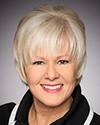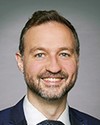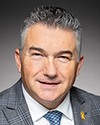Thank you very much, Mr. Chair, and thank you for the invitation.
We've already gone through the introduction, so I'll just say on behalf of my colleagues that it's an honour to be here this morning, and we're looking forward to the discussion.
The topics of the Euro-Atlantic and the Indo-Pacific are very relevant, given the priority that was placed on them in our recent defence policy update, “Our North, Strong and Free”.
For the first session, I would like to start with the recent NATO summit in The Hague, which underlined the cornerstone role that NATO plays in our defence and security and those of all allies. At the NATO summit, Canada committed to meeting the 2% target this fiscal year. We are accelerating over $9 billion in investments to rebuild, rearm and modernize the Canadian Armed Forces.
A 2% investment will mean better pay and support for personnel, new aircraft and vehicles, advanced sensors for Arctic surveillance and modernization of our digital infrastructure.
Additionally, allies, including Canada, have also made a historic commitment to strengthen our collective defence, including a pledge to reach 5% of GDP in defence spending by 2035. This 5% has two components.
First, allies will allocate at least 3.5% of GDP annually to core defence requirements. These are the defence areas that make up the previous 2% NATO target.
Second, the remaining 1.5% of GDP will be invested in strengthening allies’ defence industrial base, protecting critical infrastructure, and ensuring civilian preparedness and resilience.
Prior to the NATO summit, the Prime Minister also participated in a Canada-EU summit and concluded a security and defence partnership with the EU that reflects our broader commitment to reinforcing and deepening transatlantic security ties.
Our Global Affairs Canada colleagues are preparing to start negotiating a bilateral agreement with the EU under the security action for Europe, or SAFE, program in order to improve access for Canadian defence companies to European opportunities.
Beyond these summits, Europe remains a key operational area for the CAF. We continue to lead NATO’s land forces in Latvia through Operation Reassurance, our largest overseas mission. During a recent visit to Latvia, the Prime Minister announced an extension of that operation for another three years.
Canada is a key player in NATO’s deterrence posture on the eastern flank. As a framework nation for NATO’s forward land forces in Latvia, Canada, along with our 13 partners in the multinational brigade, is part of the biggest reinforcement of alliance collective defence in a generation.
In the east, supporting Ukraine is central to our shared security. Canada’s efforts in military training and capacity building began in 2015 and continue today through Operation Unifier. Since 2015, we have trained over 46,000 Ukrainian troops under Operation Unifier, covering vital areas such as basic and advanced military skills, battlefield tactics, medical training and combat engineering.
On the battlefield, we’ve seen small Russian progress at significant costs for them, and numerous examples of Ukrainian innovation and willingness to continue to fight, such as June’s Operation Spiderweb, which targeted Russian long-range aviation. My colleagues can provide additional details on the battlefield situation or on the status of negotiations, if desired.
Canada continues to contribute and is working with our allies, through the NATO Security Assistance and Training for Ukraine, or NSATU, and through the coalition of the willing, to explore substantive security guarantees for Ukraine, which is an essential step toward a durable peace.
In the meantime, though, we are also focused on ensuring that Ukraine has the funding and equipment needed to continue the fight. Since the full-scale invasion, Canada has pledged nearly $22 billion in aid to Ukraine, including over $6.5 billion in military assistance. This has delivered critical capabilities for Ukrainians, including armoured vehicles, high-tech components, flight simulators for F-16s and essential things such as winter clothing, all of which have been provided by Canadian suppliers.
We are also proud to provide training for F-16 pilots under the Ukraine Defense Contact Group’s air force capability coalition and to contribute to the armour, drone, and information and technology coalitions. These efforts reflect our enduring commitment to Ukraine’s sovereignty and to Euro-Atlantic stability.
In closing, I would like to point out that the security environment in Europe remains dynamic and complex. That said, NATO remains strong and ready to defend allied territory, as seen in the recent incursion of Russian drones over Polish airspace on September 9 and 10. This prompted a coordinated response from allied forces and the invocation of article 4 of the North Atlantic Treaty.
These very difficult times underline the importance of the defence investments that we're making and the need to work closely with our allies.
We look forward to your questions.










